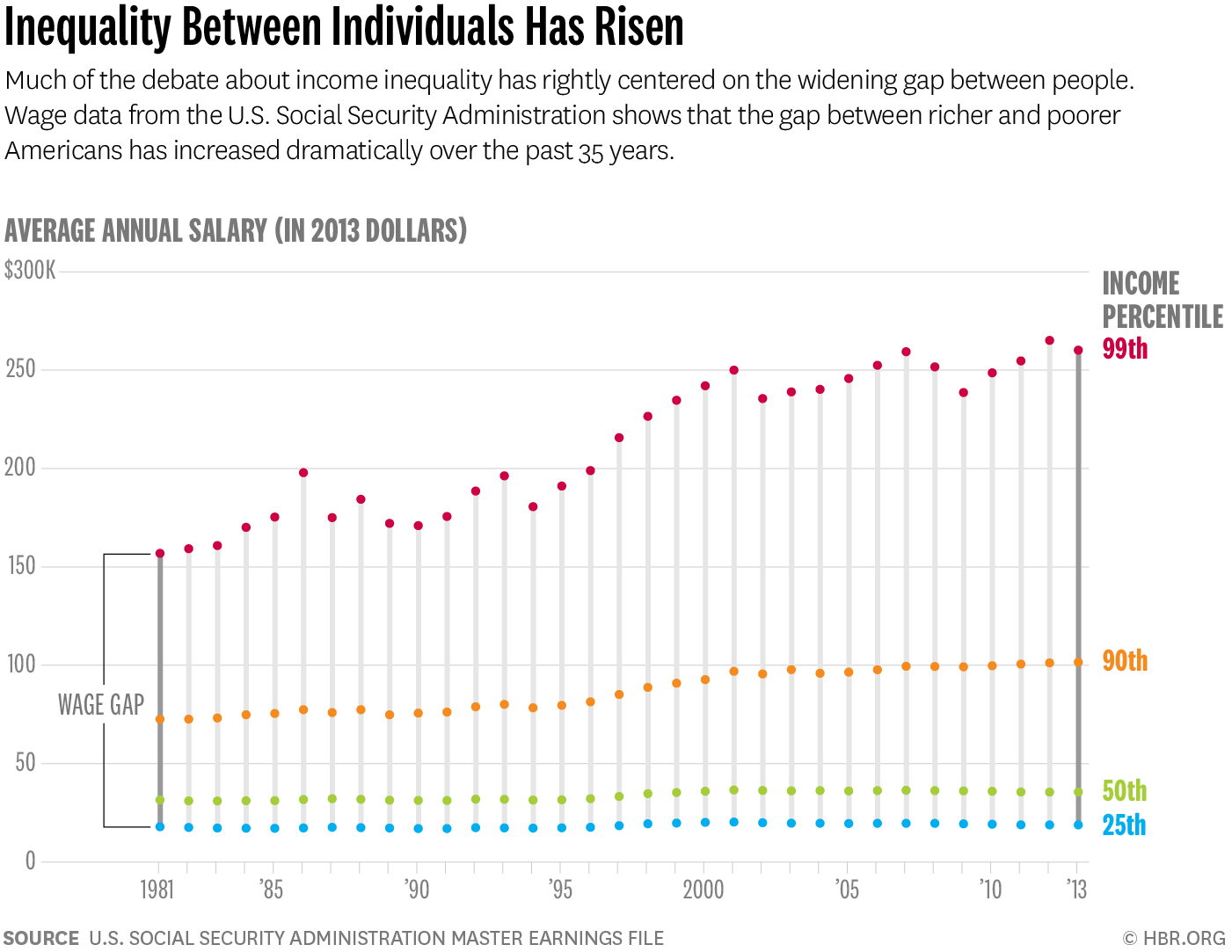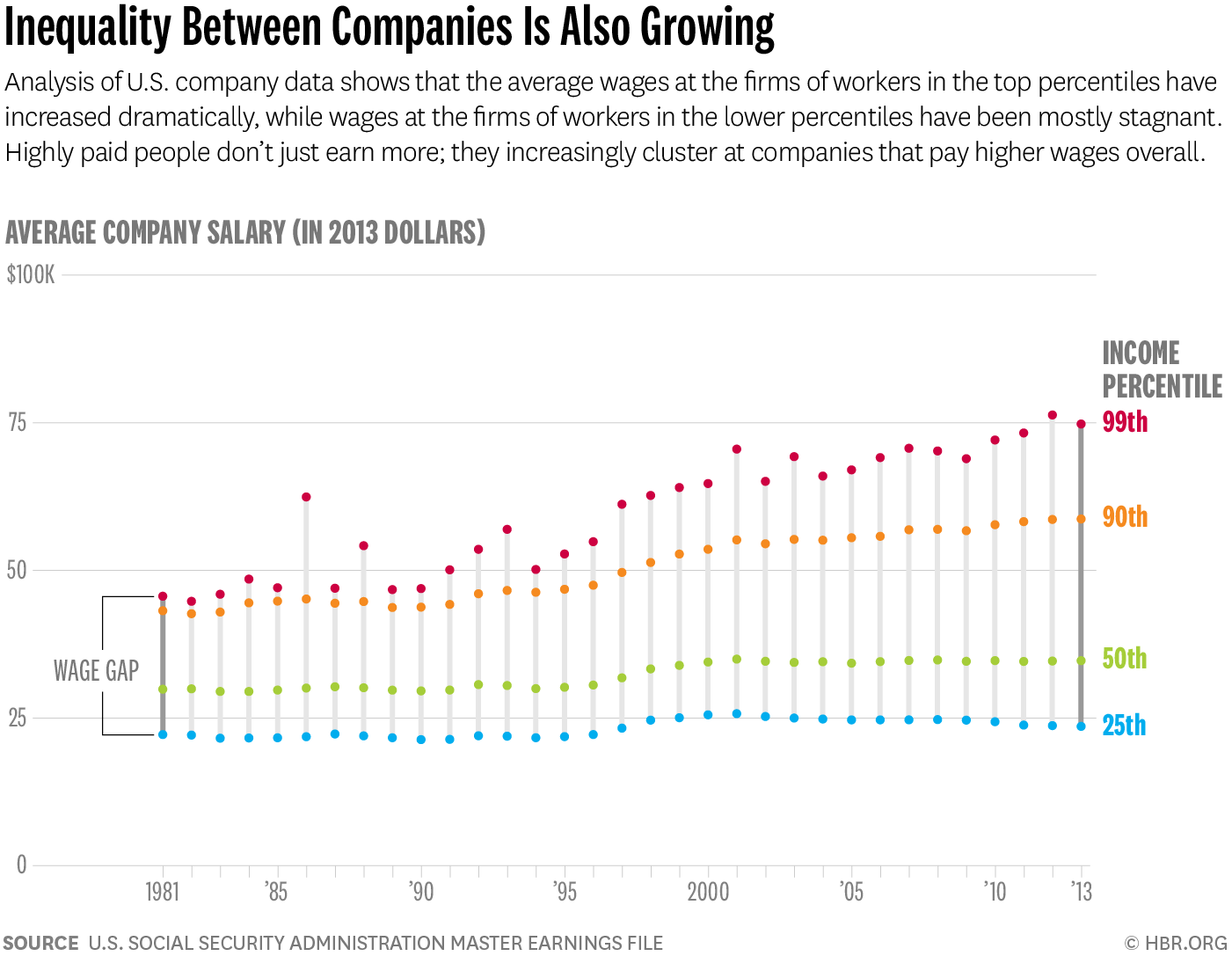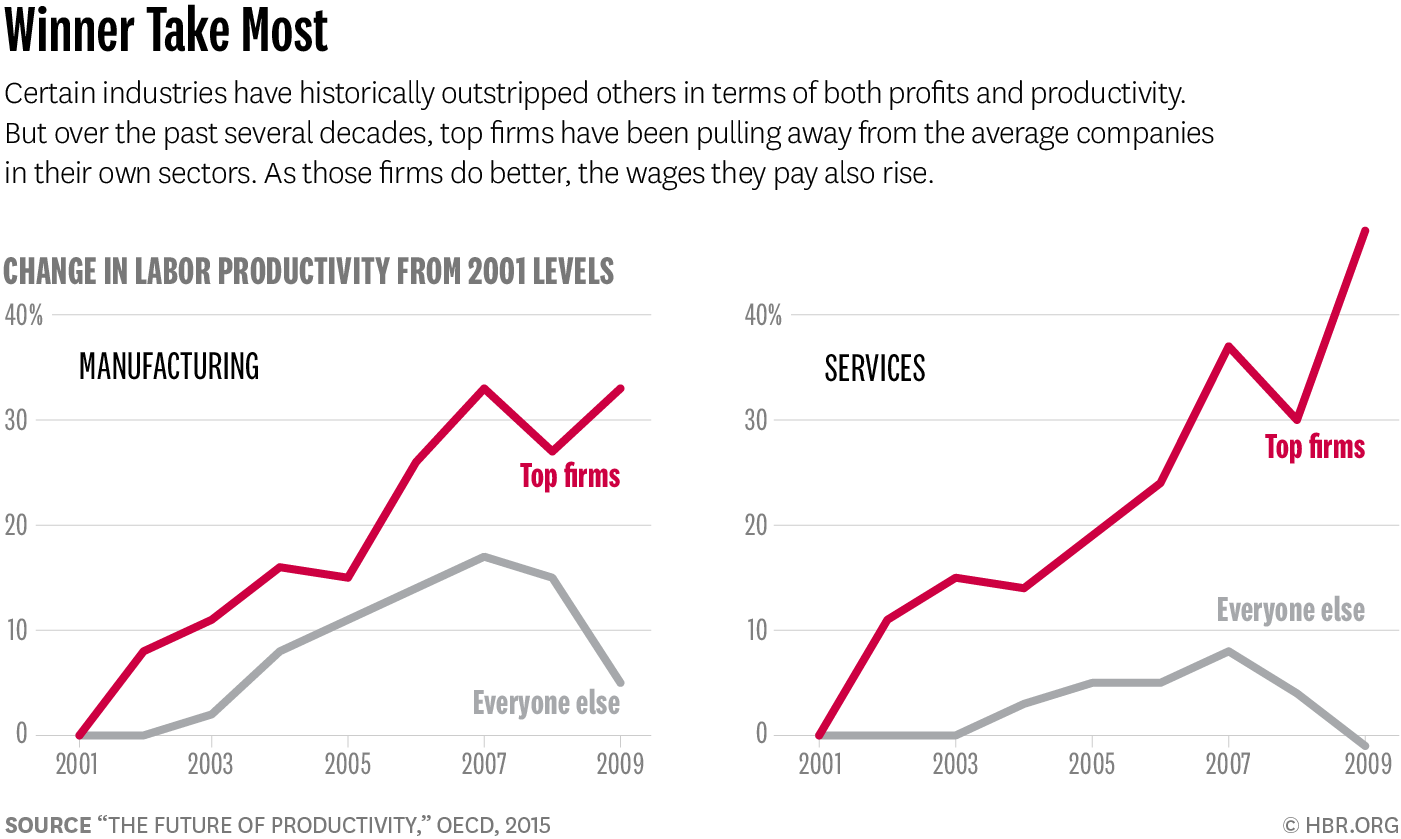Inequality isn’t just about individuals — it’s risen between companies, too.
I believe that much of the rise of between-firm inequality, and therefore inequality in general, can be attributed to three factors: the rise of outsourcing, the adoption of IT, and the cumulative effects of winner-take-most competition.
What is clear is that over the past 35 years, firms have divided between winners and losers, and between those that rely heavily on knowledge workers and those that don’t. Employees inside winning companies enjoy rising incomes and interesting cognitive challenges. Workers outside this charmed circle experience something quite different. For example, contract janitors no longer receive the benefits or pay premium tied to a job at a big company. Their wages have been squeezed as their employers routinely bid to retain outsourcing contracts, a process ensuring that labor costs remain low or go ever lower. Their earnings have also come under pressure as the pool of less-skilled job seekers has expanded, due to automation, trade, and the Great Recession. In the process, work has begun to mirror neighborhoods — sharply segregated along economic and educational lines.
Source: Corporations in the Age of Inequality | HBR.org
1m:44s tl;dr Video: Corporations in the Age of Inequality


